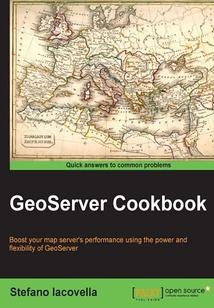目錄(94章)
倒序
- 封面
- 版權頁
- Credits
- About the Author
- Acknowledgments
- About the Reviewers
- www.PacktPub.com
- Support files eBooks discount offers and more
- Preface
- What this book covers
- What you need for this book
- Who this book is for
- Sections
- Conventions
- Reader feedback
- Customer support
- Chapter 1. Working with Vectors
- Introduction
- Using different WFS versions in OpenLayers
- Using WFS nonspatial filters
- Using WFS spatial filters
- Using WFS vendor parameters
- Filtering data with CQL
- Filtering data with CQL spatial operators
- Creating a SQL view
- Creating a parametric view
- Improving performance with pregeneralized features
- Chapter 2. Working with Rasters
- Introduction
- Getting coverages in different formats
- Using WCS vendor parameters
- Publishing a mosaic
- Using pyramids
- Adding GDAL formats
- Adding a PostGIS raster data source
- Chapter 3. Advanced Styling
- Introduction
- Installing the CSS module
- Creating a simple polygon style with CSS
- Adding filters to your style
- Adding labels with CSS
- Creating scale-dependent rules
- Rendering transformations for raster data
- Creating a dot density chart
- Chapter 4. Geoprocessing
- Introduction
- Installing the WPS module
- Using the WPS process builder
- Chaining process – selecting features contained in a polygon
- Chaining process – building your own task
- Chapter 5. Advanced Configurations
- Introduction
- Upgrading GeoServer
- Creating a script for automatic startup
- Optimizing Java
- Setting up a JNDI connection pool
- Working with CRS
- Using the reprojection console
- Overriding an official EPSG code
- Setting up GeoWebCache – how to make pre-rendered tiles for high availability
- Storing configurations in an RDBMS
- Chapter 6. Automating GeoServer Configurations
- Introduction
- Managing workspaces with REST
- Creating and editing data stores with REST
- Managing layers with REST
- Uploading and updating styles with REST
- Managing layers with the GWC REST API
- Managing cache tiles with the GWC REST API
- Chapter 7. Advanced Visualizations
- Introduction
- Adding time to WMS maps
- Using the WMS animator
- Keyhole Markup Language styling
- Using z-order creatively
- Using transparency creatively
- Using symbology encoding
- Chapter 8. Monitoring and Tuning
- Introduction
- Installing the control flow module
- Setting a per-user limit
- Setting a per-request limit
- Installing the monitoring extension
- Configuring the monitoring extension
- Creating reports from the monitoring database
- Limiting the GeoWebCache disk use
- Appendix A. OGC for ESRI Professionals
- Introduction
- ArcGIS versus GeoServer
- Understanding standards
- WMS versus the mapping service
- WFS versus feature access
- Publishing raster data with WCS
- Index 更新時間:2021-08-05 17:10:18
推薦閱讀
- SQL Server 從入門到項目實踐(超值版)
- ClickHouse性能之巔:從架構設計解讀性能之謎
- Node.js 10實戰
- Rake Task Management Essentials
- Magento 1.8 Development Cookbook
- 大學計算機基礎(第2版)(微課版)
- Reactive Android Programming
- 全棧自動化測試實戰:基于TestNG、HttpClient、Selenium和Appium
- 第一行代碼 C語言(視頻講解版)
- Learning Unreal Engine Android Game Development
- 21天學通C++(第5版)
- Mastering Gephi Network Visualization
- WildFly Cookbook
- 官方 Scratch 3.0 編程趣味卡:讓孩子們愛上編程(全彩)
- 原型設計:打造成功產品的實用方法及實踐
- C++服務器開發精髓
- 例說FPGA:可直接用于工程項目的第一手經驗
- Mastering ArcGIS Server Development with JavaScript
- TensorFlow 2.0深度學習應用實踐
- C語言解惑:指針、數組、函數和多文件編程
- Neo4j High Performance
- C++ Primer(中文版)(第5版)
- 零基礎Python學習筆記
- 從Scratch進階到Python(基礎篇)
- 新標準C++程序設計
- Dapr與.NET微服務實戰
- Getting Started with UDOO
- Electron Projects
- Unreal Engine 4.X By Example
- Python快速編程入門(第2版)


